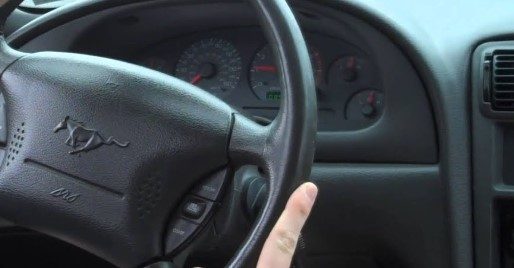2001 Ford mustang drive cycle

The 2001 Ford Mustang, a classic and iconic American muscle car, has captured the hearts of enthusiasts for generations. Beyond its powerful engine and timeless design, modern vehicles like the 2001 Mustang are equipped with advanced onboard diagnostics systems that monitor various aspects of the vehicle’s performance. One crucial aspect of these diagnostics is the drive cycle—a specific set of driving conditions that help the vehicle’s onboard computer system complete various self-tests. In this comprehensive discussion, we’ll explore the significance of the 2001 Ford Mustang drive cycle, its role in emissions testing, how to execute a successful drive cycle, and tips for achieving accurate results.
Understanding the Drive Cycle:
A drive cycle is a sequence of driving conditions that a vehicle must go through in order to enable the vehicle’s onboard diagnostic system (OBD-II) to complete its self-tests. These self-tests monitor various components and emissions-related systems to ensure they are functioning properly. The drive cycle ensures that the OBD-II system has collected enough data from different driving conditions to accurately assess the vehicle’s performance and emissions.
The Importance of the Drive Cycle:
- Emissions Testing: One of the primary reasons for completing a drive cycle is to prepare the vehicle for emissions testing. Emissions regulations require that vehicles meet specific emissions standards, and the OBD-II system must verify that the emissions control systems are operating correctly.
- Error Detection: The drive cycle helps the OBD-II system detect and report any malfunctions or issues with the vehicle’s emissions control systems. If a problem is detected, the system will trigger a diagnostic trouble code (DTC) and illuminate the “Check Engine” light on the dashboard.
- Readiness Monitors: The OBD-II system has readiness monitors that need to be “ready” before a vehicle can pass emissions testing. Completing the drive cycle ensures that these monitors have collected sufficient data to accurately assess the vehicle’s emissions performance.
- Real-World Data: The drive cycle involves a range of driving conditions, from highway driving to stop-and-go traffic. This diversity ensures that the OBD-II system collects data from different engine operating modes, leading to a more accurate assessment of the vehicle’s emissions and performance.
Executing a Successful Drive Cycle:
The drive cycle for the 2001 Ford Mustang is a specific set of driving conditions that need to be met for the OBD-II system to complete its self-tests. It’s important to note that while many drive cycles are similar, they can vary slightly depending on the vehicle’s make, model, and year. Here is a general outline of the steps involved in the 2001 Ford Mustang drive cycle:
- Cold Start: Begin the drive cycle with the vehicle’s engine cold (not fully warmed up).
- Idle: Allow the vehicle to idle for about 2 minutes with the transmission in “Park” or “Neutral.”
- Acceleration: Accelerate gradually and maintain a steady speed between 30 and 45 mph for about 1 minute.
- Deceleration: Gradually decelerate to a stop without applying the brakes. Let the vehicle coast to a complete stop.
- Idle Again: Allow the vehicle to idle for about 1 minute.
- Highway Driving: Drive at a steady speed between 40 and 60 mph for about 8-10 minutes. Avoid sudden accelerations or decelerations.
- Stop-and-Go Traffic: Drive through city traffic, including stop-and-go conditions, for about 10-15 minutes.
- Idle Once More: Allow the vehicle to idle for about 1-2 minutes.
Tips for a Successful Drive Cycle:
- Follow Instructions: It’s essential to follow the drive cycle instructions accurately and in the specified order to ensure the OBD-II system completes its tests properly.
- Ensure Proper Maintenance: A well-maintained vehicle is more likely to pass the drive cycle successfully. Address any known issues before attempting the drive cycle.
- Fuel Level: Keep the fuel tank at least half full to ensure consistent fuel delivery during the drive cycle.
- Avoid Resets: Avoid disconnecting the battery or using a scan tool to clear trouble codes before attempting the drive cycle. Doing so may reset the OBD-II system and delay the readiness monitors.
- Plan Ahead: Make sure you have enough time and a suitable driving route to complete the entire drive cycle.
- Repeat if Necessary: If the vehicle’s readiness monitors are not “ready” after the first attempt, you may need to repeat the drive cycle. Some vehicles require multiple successful drive cycles to complete all readiness monitors.

